
Elementary News
by Mr. Glenn Davies, Elementary School Principal
Dear Elementary Community,
We have now completed the 8th day of the 2020/2021 school year. I am proud of what has been achieved by our elementary community over these past weeks. Challenging times often bring people together and although we continue to find ourselves in a situation we would rather not be in, each of us are working strategically to ensure we continue to provide the best possible education for our children. One of the changes you will have noticed in our Remote Learning program is the increase in synchronous face to face learning and teaching time. Video conferencing technology has enabled each student and teacher to connect far more frequently, making the school experience more meaningful. In our younger grades, we also have the goal of greater student independence with less reliance on the parent being constantly present to support learning a home.
Remote Learning Home Schedule
To support this goal, today you will receive a Synchronous (face to face) 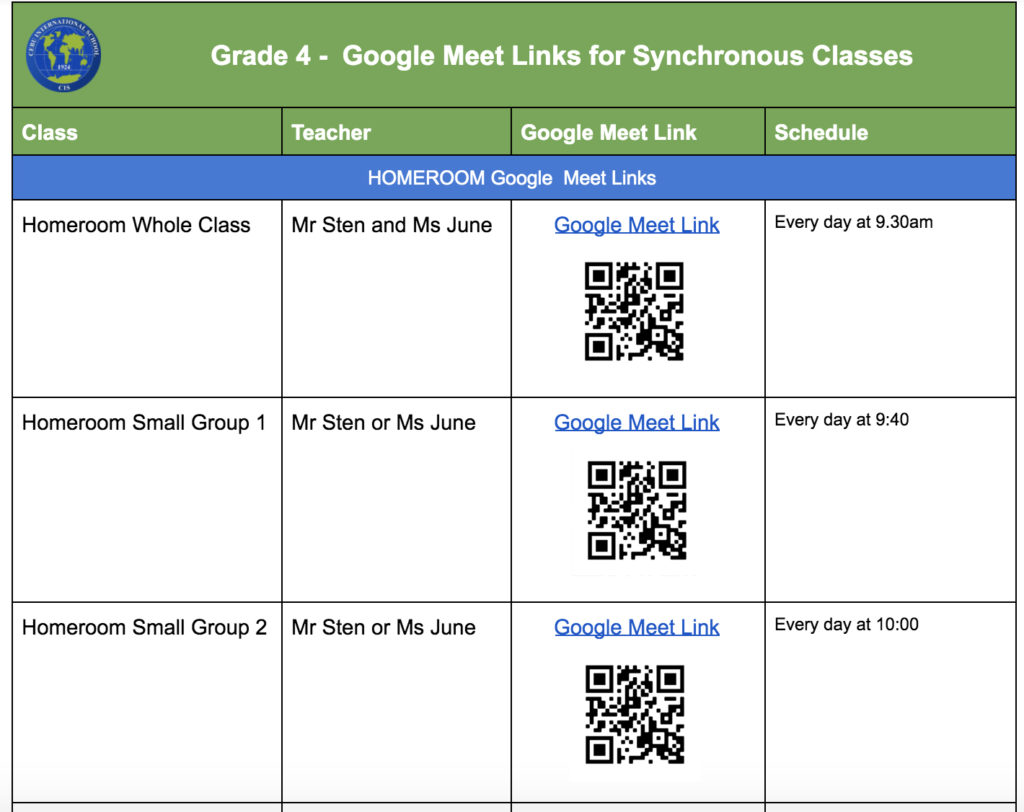 meeting schedule for your child. This schedule contains links and QR codes to each of the Synchronous (face to face) meetings your c
meeting schedule for your child. This schedule contains links and QR codes to each of the Synchronous (face to face) meetings your c
hild will be involved in. This document can be saved on a computer desktop, and can even be printed and put on the refrigerator door. Your child can then just follow the link or scan the QR code to enter their meeting at the assigned time. It is our hope that this document will make the process of taking part in Synchronous (face to face) learning sessions one step easier.
Please do continue to provide us with your feedback about the Remote Learning experience within your household. Our teaching team really appreciate the positive feedback, as it really builds their confidence and validates the challenging work they are involved in daily. We also value the feedback that tells us what is not working, as this allows us to fine-tune our program to better meet your family’s needs.
The role of art in a balanced education is not always valued as much as many educators believe it should be. Like mathematics, art is one of those subjects where we have typically told ourselves that we either have talent, or we don’t. The world we are preparing our students for is one of continual change, where the sands under our feet continually shift. Successful navigators of this future environment are highly innovative, highly creative, and highly flexible. They adapt to change by accepting change as a continuous cycle, like chameleons who continually adapt to their environment. Dr. Ken Robinson frequently speaks of creativity and the role it plays in the development of young people. In his talk Do Schools Kill Creativity, he challenges educators to revolutionize, change, and adapt.
The Role of Arts in Schools is an article that poses questions and provides answers about the importance of developing an artistic mindset in all learners, while also acknowledging the challenges of measuring art in quantifiable means. Art remains a key aspect of your child’s education and we are proud to share some of the pieces created by our students/your children over the first few days of school.
The Early Years artists explored creating Cartoon Character Drawings based on themselves, using the Seesaw App’s new features. This was followed up with synchronous (face to face) video calls where all the students made different expressions with their faces. One trick learned by the students was that by changing the eyebrows and mouth, the expression changes. This lesson was inspired by the artist, “Puno” who is a cartoonist.
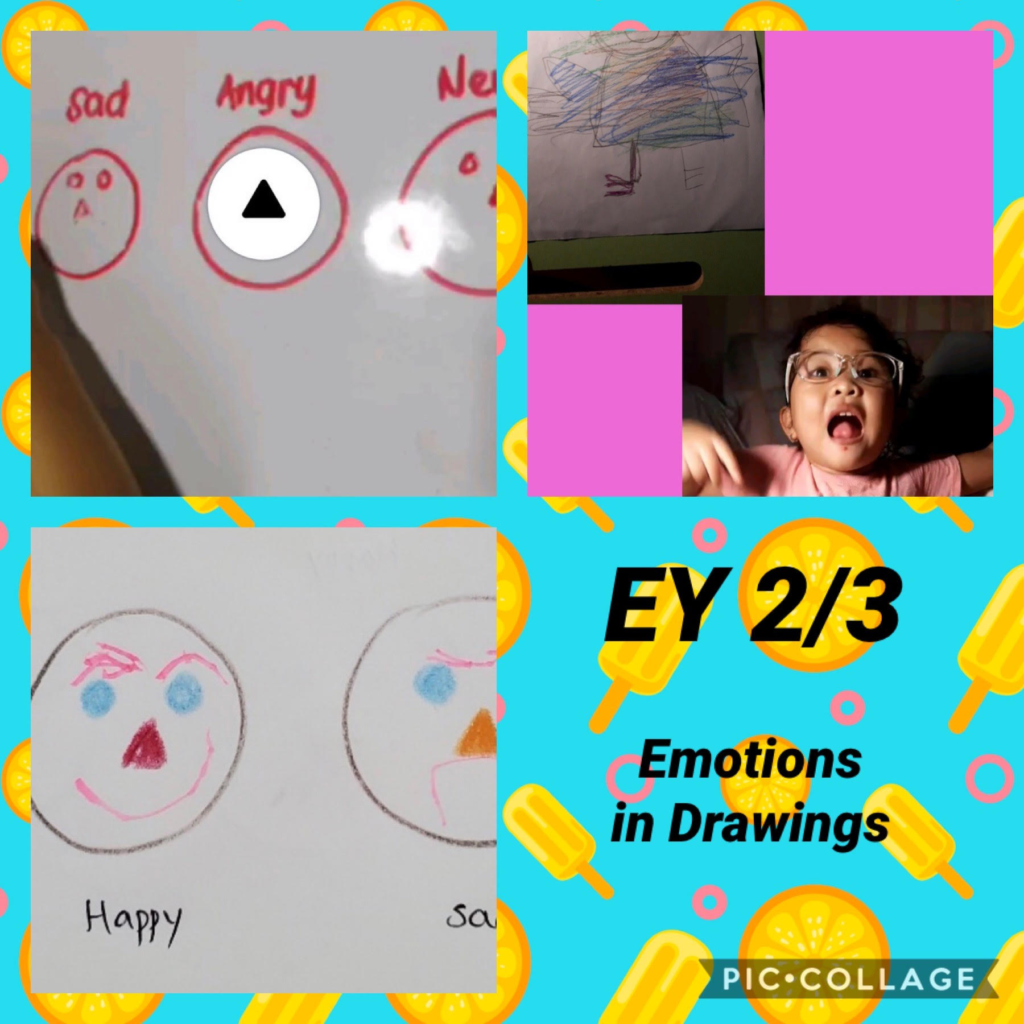
The Grade 2 artists drew Radial Patterns on the Seesaw App, learning to draw patterns digitally with a grid. The following lesson these young artists used pencil and paper to repeat these patterns and shared their learning through synchronous (face to face) video calls.
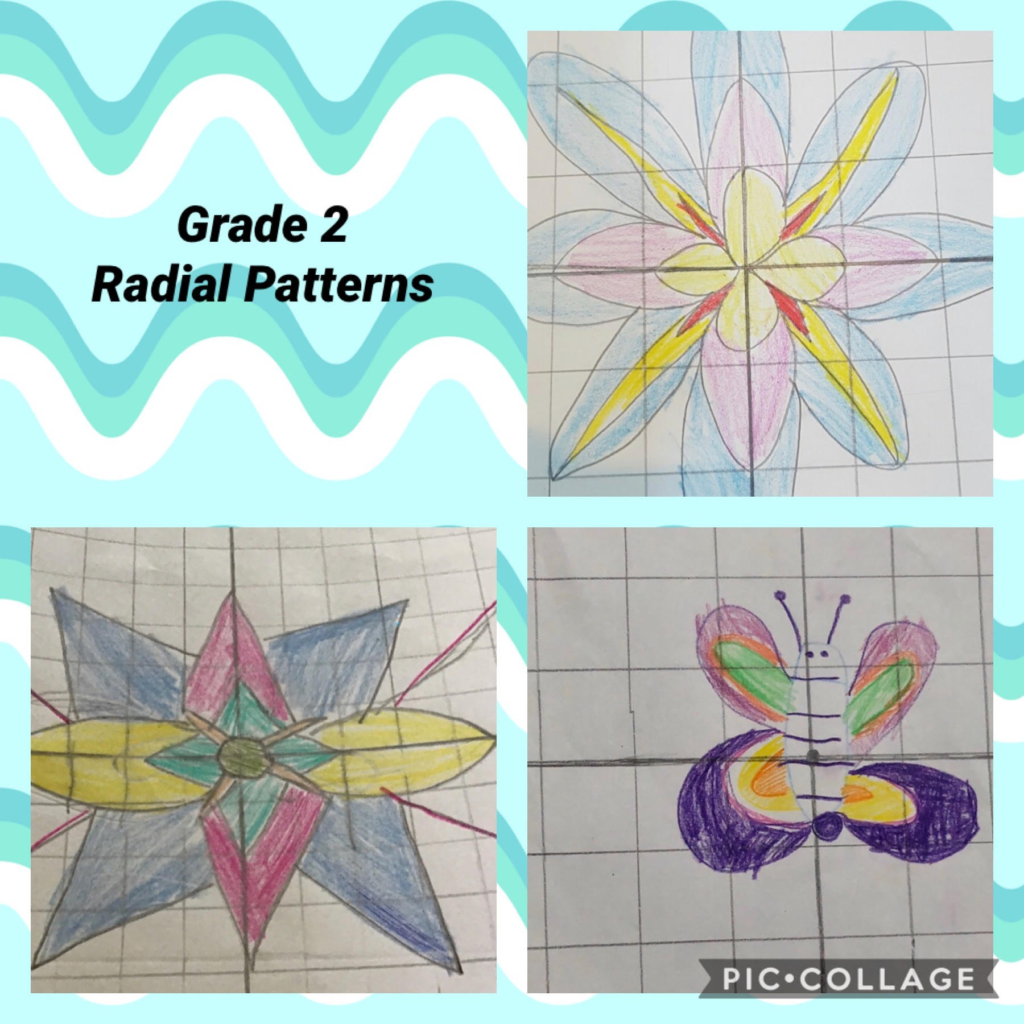
The Grade 4 and 5 artists investigated Hand Contour Drawing. This is a classic drawing exercise from Betty Edward’s “Drawing from the Right Side of the Brain” book. It involves drawing your hand without looking at the paper. The artistic habit being developed is noticing details and transferring these onto our paper. The students naturally provided feedback to each other sharing both “what they liked in their drawing” and “what they could improve next time”.
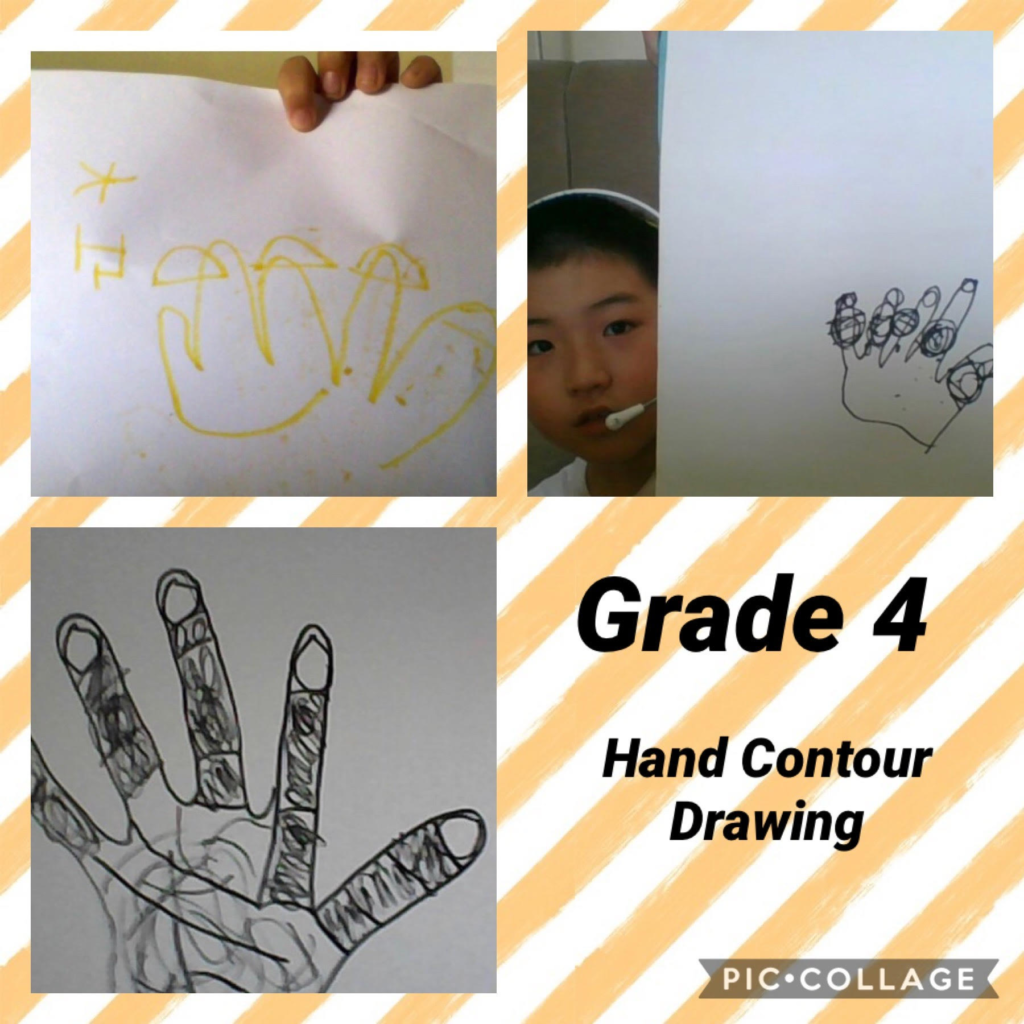
This lesson was inspired by the art of Matthias Adolfsson.

The Grade 3 artists, developed more advanced patterns, first drawing them on Seesaw and then drawing them on paper. Some of the students created incredibly detailed and colorful patterns. This lesson is a pre-skill for when they will design our own Covid Masks with patterns on them!
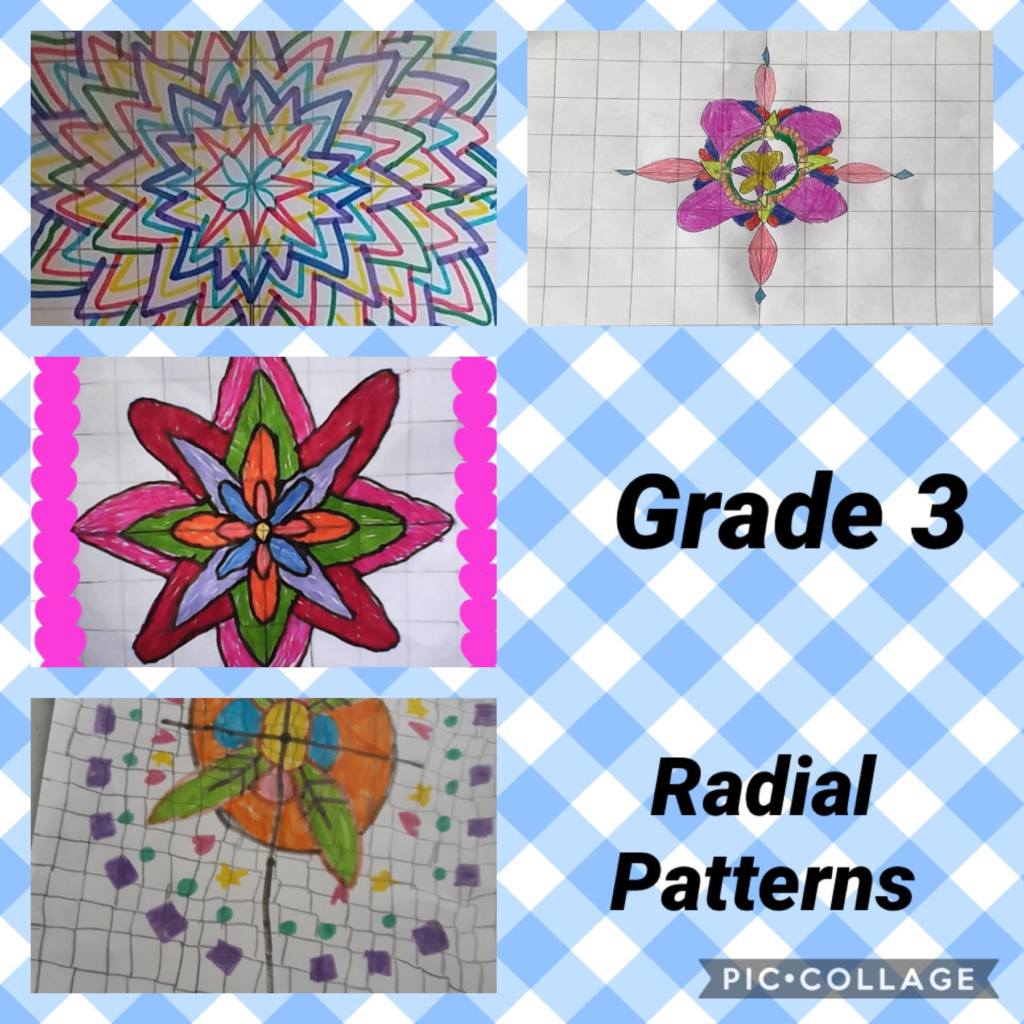

Grade 3 has focused on getting to know each other by sharing photographs of themselves, adding descriptive words to their photos, and sharing these with their friends. The students also held several discussions about our Five Respects and decided on how we will follow the Five Respects in Grade 3. These discussions helped the students to formulate all of their thoughts, and resulted in the Gade 3 students agreeing upon 10 class agreements.

- Click here to watch Interview One
- Click here to watch Interview Two
Middle and High School News
by Mr. Dale Wood, Middle High School Principal
Digital Wellbeing
I had the opportunity to attend several virtual courses over the summer, most of which were focused on effective on-line instruction and the effective implementation of technology to help the MHS navigate this season of remote learning. One of the webinars I attended explored the topic of digital well-being, and I would like to share some insights over the next few weeks that I was able to glean from this webinar beginning with the following.
The importance of rituals and healthy routines
As we move back into our academic structure for the year, it may be helpful to try and recapture some of the beneficial routines you established last year which may have eroded over the summer. One of the benefits of remote learning is that we do have a greater level of flexibility as to how we define time, and one of the blessings of the quarantine is that we do not have to stress about leaving our houses at 6:20 and fighting Cebu traffic in order to arrive at school on time for first block. Still, it can be helpful for us to reestablish a sense of rhythm and routine as we start the year from our homes. Some important rituals worth protecting would be ones connected to our family time, which could be as simple as resolving to eat at least one meal each day with the entire family or having a weekly “games” night to laugh and bond (and even compete) together.

Another important area would be developing healthy habits and routines related to sleep and rest. If you were informed that there was a drug that was free, would make you feel wonderful, would improve your mood, was perfectly safe, and would actually increase your productivity, would you want it? Most of us would jump at such a crazy possibility. In fact, that drug does exist; it’s called sleep. Research, such as the link to the article below from the Harvard Business Review written by Larry Rosen, a psychology professor at California State University, attests to the importance of sleep and its correlation to our state of general physical and mental health. He also articulates the habits (specifically connected to technology) that can lead to better, more restful sleep.
Relax, Turn Off Your Phones, and Go to Sleep
Some of the tips in the article that Dr. Rosen suggests are as follows (and in the article he explains why these habits are important based on how our brains work):
- During the day, practice not reacting to incoming alerts or notifications like one of Pavlov’s dogs. Don’t check your phone every time it beeps. In fact, turn off notifications and check on a schedule to retrain your brain’s neurotransmitters (particularly cortisol). Start by checking every 15 minutes, and gradually increase that to 30 minutes or more. Tell your family, friends, and colleagues that you may not respond immediately, but you will within a specified amount of time, such as 30 minutes to an hour later.
- Stop using all devices one hour prior to sleep.
- Put all devices away in another room rather than keep them in the bedroom to discourage you from checking them during the night. (If you must keep a phone nearby in case of emergency, set it so that it only rings when certain people are calling, but still place it across the room and away from your bedside.)
- An hour before bedtime, start dimming the room lights slowly to release melatonin.
- During the last hour before bedtime, choose an activity that your brain will find predictable and, thus, not anxiety-provoking. Consider any of the following:
- Watch a television show that you love, maybe even a repeat.
- Read a paper book (or use a Kindle which doesn’t emit blue light) by a familiar author.
- Listen to music that is very familiar like a playlist of your favorite songs. If you need a device to do this, burn CDs and get a CD player. (The key is to use a device that doesn’t have internet access, email, or a phone.) Keep the volume low.
- If you awaken in the middle of the night, try this trick: have a song lyric in mind (not the whole song) that you plan to sing in your mind over and over to block the anxiety and allow you to fall back to sleep. Another option is to learn one of many meditation techniques and practice and use those skills to calm your mind.
Seeking and maintaining balance
Our IB Learner Profile trait for August is balance. As parents, often we need the wisdom to decide which battles are worth fighting with our kids; if we fight them on everything then we will surely lose the overall campaign. What we ultimately want is the best for them, which includes helping them develop a routine of self-care. It is also loving for us to set boundaries for them, as often they don’t yet have the maturity to know what is best.
Further, when we have conversations with our kids about managing themselves on potentially contentious topics such as appropriate amounts of screen time (or other challenging areas), we also need to be careful that we are first regulating our own emotions; we need to be emotionally steady and calm when we have these conversations. As with most things, we provide a model for this for our children when we do this effectively, or present a negative model if we do the opposite. Sometimes we need to step back if we are too emotionally charged at the moment; we all have things that can push us over the edge and in that state our conversation will likely not be productive. If you find yourself in that state, don’t force the issue but rather set a time (i.e. set a structure) to talk later with your child. And, as with most human interactions, our tone of voice is critical if we want this conversation to be fruitful.
The MYP needs you!
by Jonathan Denton, MYP Coordinator/Assistant Principal-MYP
Hello everyone and welcome to a new academic year!
While starting the year remotely is not our ideal situation, as educators I can promise you we are very much up to the challenge of developing a new blended model for learning, one that is very much in-tune with our increasingly complex world.
On-line learning will never be a replacement for face-to-face learning, however, it is forcing us to develop a new set of skills that are extremely relevant and important. As educators it is our responsibility to create “safe” learning communities that support social and emotional well-being. We aim to transform classroom learning through tech tools for collaboration, social connection, culture building and differentiation. We will model effective on-line behaviours such as maximising our time together, providing opportunities for students to collaborate, ask questions, clarify confusion and receive feedback. We will offer our students flexibility through a combination of synchronous and asynchronous learning tasks. We will also need to rethink assessment focusing on formative assessment as learning, providing feedback in a more personalised manner.
It is a brave new world but we are all ready for this challenge, safe in the knowledge that we have a supportive and forward thinking Academic Leadership Team and School Board behind us.
This year is our second year of MYP implementation at CIS, and it promises  to be a very busy one indeed. Over the course of the year we have two IB visits scheduled to analyse and evaluate how successful we have been implementing the programme. The first of these visits will be our Consultation Visit, August 27th and 28th. The second will be the Verification Visit in May. Fingers crossed, at the end of this academic year we will be the very first IB continuum school in the Philippines.
to be a very busy one indeed. Over the course of the year we have two IB visits scheduled to analyse and evaluate how successful we have been implementing the programme. The first of these visits will be our Consultation Visit, August 27th and 28th. The second will be the Verification Visit in May. Fingers crossed, at the end of this academic year we will be the very first IB continuum school in the Philippines.
How can you help? On Friday, August 28th, from 7:30 to 8:30, our IB consultant would like to hear from you. More specifically, she would like to discuss the impact of programme implementation on the school community. If you would like to join this meeting or know more about it, please let me or Ms Kim know via email.
Keep up to date with all that is happening in the MYP on our website, https://sites.google.com/cis.edu.ph/cis-myp/.
Until next time, may your news be good news.
College Counselor’s Corner
by Ms. Jenny Basa, College Counselor

College Applications in the time of COVID-19
The College Board has not officially cancelled the Aug. 29 exam. However, given the quarantine restrictions in Cebu City, it is highly likely that the exam will be cancelled. Please monitor your emails. Updates will be sent to your email from the College Board.
Yes, most universities in the US have gone test-optional. This means that an applicant is not required to submit these scores. However, you may choose to submit scores if you have taken the tests previously.
- Some students have a background, identity, interest, or talent that is so meaningful they believe their application would be incomplete without it. If this sounds like you, then please share your story.
- The lessons we take from obstacles we encounter can be fundamental to later success. Recount a time when you faced a challenge, setback, or failure. How did it affect you, and what did you learn from the experience?
- Reflect on a time when you questioned or challenged a belief or idea. What prompted your thinking? What was the outcome?
- Describe a problem you’ve solved or a problem you’d like to solve. It can be an intellectual challenge, a research query, an ethical dilemma-anything that is of personal importance, no matter the scale. Explain its significance to you and what steps you took or could be taken to identify a solution.
- Discuss an accomplishment, event, or realization that sparked a period of personal growth and a new understanding of yourself or others.
- Describe a topic, idea, or concept you find so engaging that it makes you lose all track of time. Why does it captivate you? What or who do you turn to when you want to learn more?
- Share an essay on any topic of your choice. It can be one you’ve already written, one that responds to a different prompt, or one of your own design.
No. Not all universities are under the CommonApp. There are also non-US universities that utilize the CommonApp as their application platform. For a list of members you may check this link: https://www.commonapp.org/explore/
To find out how to apply to a specific university, go to their website and look for the “apply” or “admissions” tab.
Yes. There will be virtual visits and college fairs. Information will be sent via email to all Grade 10, 11 and 12 students. A schedule will also be posted regularly on the weekly newsflash.
Ateneo de Manila University (ADMU), De La Salle University (DLSU) and University of Santo Tomas recognize the IB Diploma as an admission requirement in lieu of the entrance exam. The University of the Philippines requires the UPCAT for admission.
Nagoya University Webinar
 Philippines: 18th (Tuesday) 13:00
Philippines: 18th (Tuesday) 13:00
Register here: https://forms.gle/MdCc7Xv4dFsPtA997
NU offers four-year undergraduate program in: Automotive Engineering (mechanical or electrical), Physics (science), Chemistry (science or engineering), Biology (science or agriculture), Economics, Law and Japanese in Asia Cultural Studies. Since all the programs are taught in English, no Japanese language proficiency is required at the time of admission. However, Japanese language classes are offered after enrollment.
NU officers up to 100% tuition scholarships to qualified applicants.
A virtual visit will be coming up at the end of the month, the date will be announced once confirmed.
If you need more details, set up an appointment with Ms. Basa at jbasa@cis.edu.ph.
SAT Registrations Update
For students who are planning to study in universities/colleges that require the SAT exam, below is the schedule of the SAT tests. Please take note of the test dates and registration deadlines.
| 2020-2021 Test Dates | Test | Registration Deadline |
| August 29, 2020 | SAT & SAT Subject Tests | July 31, 2020 |
| September 26, 2020 | SAT only (no Subject tests) | August 26, 2020 |
| October 3, 2020 | SAT & SAT Subject Tests | September 4, 2020 |
| November 7, 2020 | SAT & SAT Subject Tests | October 7, 2020 |
| December 5, 2020 | SAT & SAT Subject Tests | November 5, 2020 |
| March 13, 2021 | SAT only (no Subject tests) | February 12, 2021 |
| May 8, 2021 | SAT & SAT Subject Tests | April 8, 2021 |
| June 5, 2021 | SAT & SAT Subject Tests | May 6, 2021 |
To register for the SAT, you may click on this link. If you need assistance, please feel free to email Ms. Jenny Basa at jbasa@cis.edu.ph.



